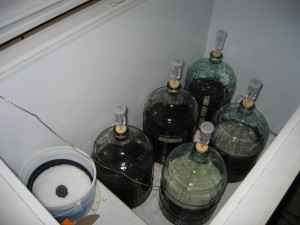Winter is great time for many homebrewers to try brewing a lager. The fundamentals of brewing lager beer do not vary with the seasons. However, for homebrewers without an actively-cooled fermentation chamber, colder outside temperatures may provide a seasonal opportunity.
If you look around your house, you may find places — such as a basement or attic — that are significantly cooler than the rest of the house. Depending on where you live, an unheated garage or outdoor shed may also fall within a usable temperature range for a period of time. [Read more…]




Recent Comments